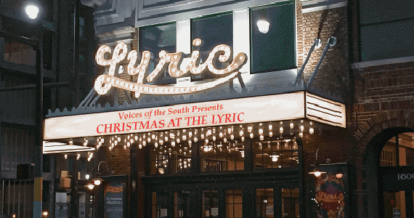“Every tip given in the United States is a blow at our experiment in democracy. The custom announces to the world…that we do not believe practically that ‘all men are created equal.’ Unless a waiter can be a gentleman, democracy is a failure.”
–William R. Scott, The Itching Palm: The Habit of Tipping in America
Indeed, tipping is as hot and fraught today as it was when Scott published these words in 1916. A simple Google search bring up headlines screaming for a revolution:
- The Gratuitous Injustice of American Tipping Culture
- 9 Reasons We Should Abolish Tipping, Once And For All
- The Long, Uphill Fight to End Restaurant Tipping
- Why Tipping Should Be Outlawed
At a glance, these arguments conjure images of restaurant staff burning bill folds, lassoing aprons above their heads in protest, as management takes cover in the trenches of the pantry, somewhere behind the coffee station. The struggle is real.
Anti-tippers rally for standardized living wages across both front and back of house staff, un-incentivized service, and penalty-free pay (when a server loses out on tips because of factors that were out of their control). Pro-tippers, especially in urban areas, see restaurant tipping almost as a part of American identity – and, of course, as a way to keep doors open, costs down, and tables filled. That is, after all, the business model they founded on. Both sides have their points, and yet anti-tipping is gaining momentum as a favorable approach.
In North America, we tip. It’s the way it’s always been. But as we dissect tipping norms both from a customer and operational perspective, ambiguities emerge and the lack of standardization becomes exceedingly apparent.
Shifting vastly over the last decade, tipping trends have come to a tipping point. So how much should you tip at a restaurant? What is the standard now and how could no-tip policies change the way restaurants of the future are modeled? Let’s dig in.
Tip Percentage
For the majority of restaurants who, at least for now, maintain a tipping approach, the actual percentage expected by servers has increased. While 15% was long the norm in North America, 20% has become the extended standard for full service restaurants. On TripAdvisor, etiquette advice for the US states between 15-20% of the bill cost, while Canadian etiquette advice states, “15-20% on the total bill before tax, 5-10% for poor service, 25% for exceptional service.” These tips are paid on top of any restaurant service charges.
But now there are so many genres of restaurants emerging, with various service levels. Quick service, fast casual, cafes – all which when you pay by card, prompt you to enter a tip. So what’s the standard?
When it comes to quick service restaurants, tipping etiquette is mixed. Some studies have found that customers believe foregoing a tip is acceptable since the employee is making minimum wage. But at the same time, many still do tip. This ambiguous pay-what-you-feel attitude is based on the actual hourly wage quick service restaurant workers make.
In Canada the difference is not gaping – server’s wage hovers around the $10 mark and general minimum wage around $11 – but across the border, tipped employees in the US can be paid as low as $2.13. (The hope is that tips will bring them up to a minimum wage if not higher, though this is not always the case.) Quick service employees in the US make minimum wage – $7.25 per hour – so customers are not required to tip.
But for many customers, the tip jar is a confusing and uncomfortable experience that creates questions like, “Do I tip because the cashier was nice? Because they brought my coffee to me? Does the person who made this Buddha bowl get a cut of the two dollars I threw into the jar?”
This leads us to our next discussion…
Tip Pooling
Servers: tips-out to the kitchen, the host, the bar, and the busser.
Bar: tips-out to the kitchen, the host, and the busser.
For many, this is how it’s always been. Pooling aims to level out the playing field between different staff, where servers pay out a percentage of their tips based on their total sales. And yet again, there is no set-in-stone standard, and some groups – mainly the kitchen, seem to be neglected all together.
As for pooling standards… well, unfortunately there is no standard. The US department of Labor states that, “the requirement that an employee must retain all tips does not preclude a valid tip pooling or sharing arrangement among employees who customarily and regularly receive tips. The FLSA does not impose a maximum contribution amount or percentage on valid mandatory tip pools.” All is ambiguous.
One Reddit thread hosted numerous answers from servers all over North America. Their answers were all over the board:
- A user from a mid range restaurant in San Francisco’s financial district says: 1% to host, 1% to food runner, 3.5% to bussers, 2% to bartenders
- A user from a casual sushi restaurant: 3.5% of total sales
- Another user states: 2% of alcohol sales go to the bar, 2% of food sales go to the runners, 3% of total sales go to the bussers
What does tip out mean? It means giving servers a set percentage of their earned tips and giving some of those away to non-tipped staff. And if you’re wondering why there’s an absence of kitchen tip outs, the reason might just be because it’s illegal. Adding fuel to the no-tip policy debate, recently California’s 9th Circuit Court of Appeals upheld a previous 2011 ruling that bans restaurants from making servers and bartenders share their tips with back of house employees.
While it’s reported that this will likely have a small effect on California where the legal grey area prevents most restaurants from tip pooling anyway, grey areas like this do bring to the table the no-tipping policy debate and if it would level the playing field among front and back of house staff.
Policies – The “No-Tipping” Future?
There are many questions around the logistics of no tipping policies: Will front-of-house lose out on tips? Will the cost to the customer rise? Will service suffer? Will no-tipping policies have equal effects on models in Canada and the US?
A recent Freakonomics podcast, The No-Tipping Point, looked into what happens when “you eliminate tipping, raise menu prices, and redistribute the wealth.” In a discussion with New York restaurant pioneer, and CEO of Union Square Hospitality group, Danny Mayer and his executive staff who run some fourteen restaurants, goes through the challenges they’ve faced with compensation. In addition, they discuss a no-tipping policy trial at his restaurant The Modern. The policy works to raise the wage of previously underpaid kitchen staff and standardize server’s wage to an hourly rate at par with their previously tipped earnings – all without raising prices beyond what the customer would pay with tip included.
Here’s how the policy works:
Cost of Menu Items: “The true cost of dining at one of our restaurants will [now] be represented in [the menu] price, and that price is going to vary in terms of how much it’s been marked up. So some of the items, like a cup of coffee, are still going to be priced like a cup of coffee today, and others will go up at varying rates. But the main thing to know is that when you get that check, at the bottom, that amount that you’re reaching in your pocket to pull out your wallet, is going to be about the same as it is today.”
Back of House Wages: “The lowest-paying kitchen jobs — washing dishes, cleaning floors and so on — would rise to $12 an hour, up from less than $10. Cooks would now start at $14 an hour.”
Front of House Wages: “Our dining-room team will be receiving a base hourly wage of $9 an hour up from $5 an hour from the tipped minimum wage. And in addition to that, we will be implementing what we’re calling a revenue-share program, which essentially means that we will be allocating a portion of our revenues and distributing them to our dining-room teams in addition to their base compensation of $9 an hour.”
So how is everything panning out in the no-tip policy experiment? So far, so good. The restaurant had its most profitable month in its history and they’re adamant that thus far, no customer is paying more and no server is losing out. They’ve seen their applications for both back and front of house staff skyrocket, there are no longer fights over coveted shifts and staff morale has been positively affected.
On top of this, the no-tipping policy is catching. Mayer said, “since you and I first spoke, a good five really important restaurateurs and chefs in New York City alone, not to mention throughout the country, have already announced that they’re shifting.”
While New York sets the standard for food trends in North America, early adopters have only just started testing this new business model. As the restaurant industry in North America toys with changing its business model, lovers of consistency pay stand by, waiting with bated breath.
There are many questions left to be answered: Canada and the US run on vastly different labor laws and policies, so will a new model fit both countries? Will servers suffer from the lack of tips in the long run? How will the impact of no tip policies change from fine dining to casual dining to bars and greasy spoons? There are no hard fast answers right now, but one thing is for sure: restaurateurs, servers and kitchen staff should keep their eyes on trends to see what’s working and what’s not.
Download your free employee handbook template
Sign up for our free weekly TouchBistro Newsletter







